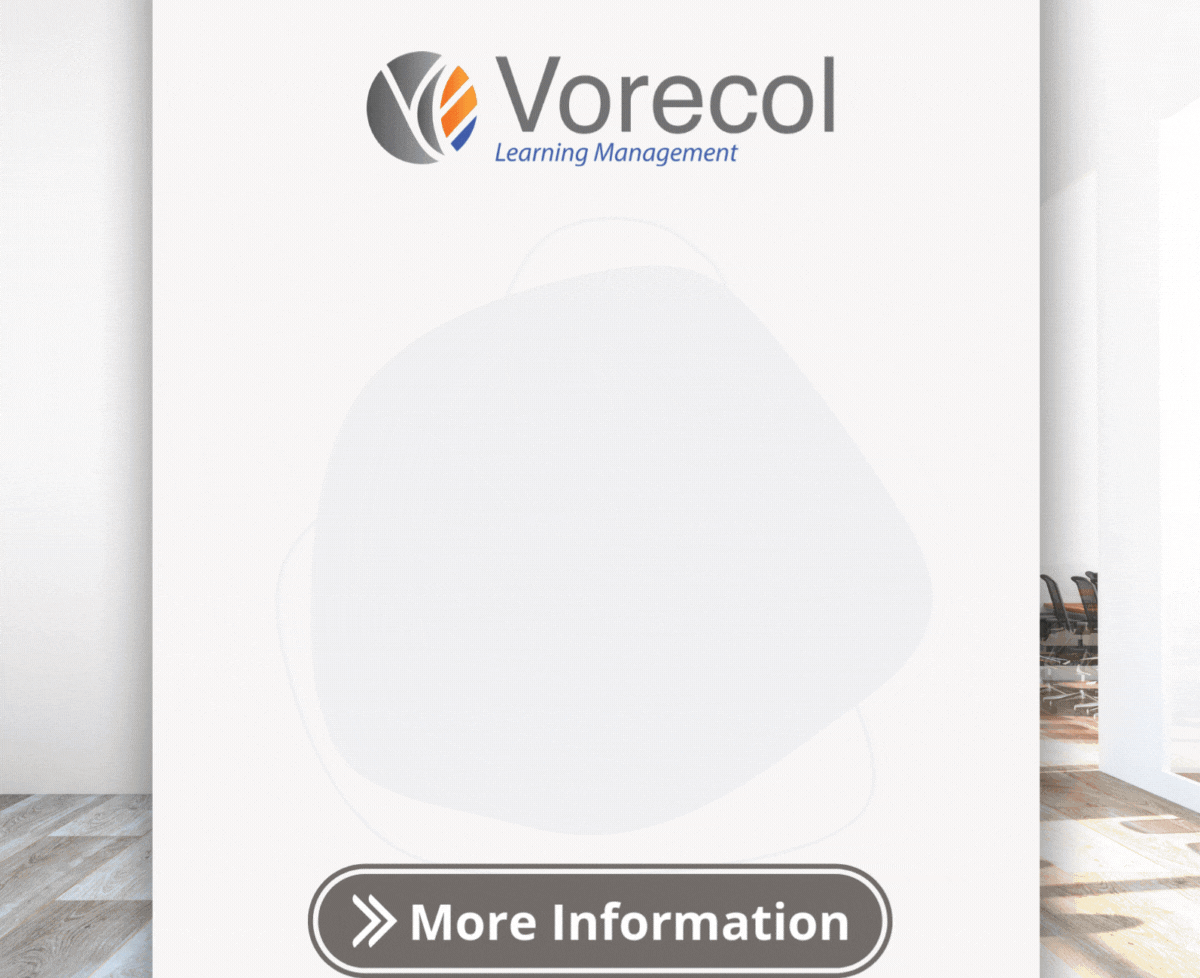Content Development: Creating Engaging Learning Materials for Your LMS

- 1. Understanding the Needs of Your Learners
- 2. Best Practices for Designing Interactive Content
- 3. Incorporating Multimedia Elements for Enhanced Engagement
- 4. Aligning Content with Learning Objectives and Outcomes
- 5. Utilizing Assessments to Measure Learning Effectiveness
- 6. The Role of User Experience in Learning Material Development
- 7. Strategies for Continuous Improvement and Feedback Integration
- Final Conclusions
1. Understanding the Needs of Your Learners
Picture this: a classroom filled with eager faces, yet some students are visibly struggling to keep up. It’s a common scene, and it prompts a crucial question: how well do we actually understand the needs of our learners? In a world where one-size-fits-all approaches often miss the mark, knowing each student's unique learning style, interests, and challenges can transform the educational experience. Engaging with students and soliciting feedback can unveil their hidden motivations and learning barriers, creating a more tailored approach to education. This not only boosts retention but also fosters a genuine love for learning.
Now, imagine having a tool that makes understanding these needs easier and more effective. That's where innovative solutions like Vorecol Learning in the Cloud come into play. This module of HRMS Vorecol is designed to help educators monitor and assess learner progress, enabling them to quickly adapt their teaching methods. By leveraging data-driven insights, educators can create personalized learning paths that cater to each student's strengths and weaknesses. Ultimately, investing time in understanding your learners not only enhances their academic journey but also prepares them for the challenges ahead.
2. Best Practices for Designing Interactive Content
Have you ever found yourself scrolling aimlessly through a boring website, only to be jolted back to life by a vivid quiz or an engaging infographic? That’s the power of interactive content! Research shows that user engagement increases by up to 300% when content is interactive, transforming mundane information into an exhilarating experience. As creators, incorporating elements such as quizzes, polls, or interactive videos can turn passive viewers into active participants, fostering a deeper connection with your message. Imagine designing a learning experience that not only informs but captivates, leaving your audience eager to explore more.
When it comes to best practices for crafting interactive content, clarity and user-friendliness are key. Nobody likes to feel lost in a sea of confusing interfaces. Think about how Vorecol's cloud-based learning module, for instance, simplifies the learning management process by making interactive resources accessible and intuitive. By prioritizing ease of use and ensuring that your interactive elements align with your audience's interests, you can create meaningful experiences that resonate. So, the next time you set out to design interactive content, remember that the goal is to engage, educate, and entertain simultaneously!
3. Incorporating Multimedia Elements for Enhanced Engagement
Imagine logging into an online course only to be greeted by a dull, text-heavy interface. You might find yourself yawning just moments in, right? Now, contrast that with a platform bursting with vibrant videos, interactive quizzes, and engaging graphics—suddenly, learning feels like an adventure! Research shows that incorporating multimedia elements can boost retention rates by up to 60%. It’s not just about making things pretty; it’s about creating a more immersive experience that keeps learners actively engaged. Platforms like Vorecol Learning in the cloud emphasize this approach by seamlessly blending various formats to enhance the overall learning process.
Think about how we naturally absorb information in our daily lives; it’s a mix of visuals, sounds, and hands-on experiences. So why shouldn’t our online learning environments reflect that diversity? Adding images and interactive content not only caters to different learning styles but also sparks curiosity and motivation. Imagine diving into a module that’s not just informative but also visually stimulating and interactive. With tools like Vorecol Learning, educators can design courses that harness the full power of multimedia, making the experience both enjoyable and effective. After all, if learning feels like a chore, how can we expect it to stick?
4. Aligning Content with Learning Objectives and Outcomes
Imagine standing in a classroom filled with eager students, each with unique aspirations and learning styles. Suddenly, the lesson veers off course, focusing more on topic tangents than on the critical skills students need to thrive. This scenario highlights a fundamental challenge in education: aligning content with learning objectives and outcomes. Did you know that studies indicate that clear alignment can boost student retention rates by up to 30%? When learning content is intentionally designed to meet specific objectives, learners are not only more engaged but also better equipped to apply their knowledge in real-world situations.
In today’s fast-paced, digital learning environment, utilizing effective tools can make a world of difference. For instance, platforms like Vorecol in the cloud can help educators seamlessly connect learning objectives with relevant content, ensuring that every lesson is purposeful. By harnessing advanced learning management systems, instructors can tailor their lessons to meet diverse student needs while adhering closely to targeted outcomes. Ultimately, when educators prioritize alignment, they empower students to succeed, creating a more enriching and effective educational experience for all.
5. Utilizing Assessments to Measure Learning Effectiveness
Imagine walking into a classroom where the teacher announces, “Today, we won't just talk about your progress; we’re going to measure it.” Suddenly, students shift in their seats, half curious and half anxious. This scene illustrates a fundamental truth: assessments can be powerful tools to gauge learning effectiveness. Research shows that utilizing assessments effectively can boost retention rates by up to 50%. This is where innovative solutions like Vorecol Learning come into play. By providing a comprehensive framework for tracking assessments, it enables educators to pinpoint where students excel and where they need support, making learning a more tailored experience.
One could argue that relying solely on traditional testing methods might not fully capture a student's grasp of the material. What if there were better ways to measure understanding? This is where technology transforms the landscape. With platforms that integrate seamlessly into existing learning management systems, educators can analyze data in real time, allowing for adjustments that benefit both students and instructors. Vorecol Learning enhances this process by offering flexible assessment tools that not only track progress but also encourage active participation. By fostering a culture of continuous improvement, assessments become less about grades and more about meaningful learning journeys.
6. The Role of User Experience in Learning Material Development
Imagine walking into a classroom where every student is fully engaged, not just passively listening but actively participating and exploring new concepts. Sounds ideal, right? That’s the incredible power of user experience (UX) in learning material development. Recent studies show that well-designed learning experiences can boost retention rates by up to 60%. This means that when we focus on creating intuitive, user-friendly materials, we don’t just enhance how information is presented; we transform how learners interact with it. Engaging content, easy navigation, and clear objectives are not just nice-to-haves; they’re essential for fostering a meaningful learning journey.
When developing learning materials, it’s crucial to place the learner at the center of the design process. Think about using modern learning management systems that prioritize user experience. Platforms like Vorecol learning in the cloud help simplify the learning path, making it easier for users to find what they need without feeling overwhelmed. By truly understanding your audience—what they need, how they learn best—you can create resources that connect with them on a deeper level. Ultimately, an outstanding user experience can lead to increased motivation, better performance, and a more profound love for learning. So, how are you designing your materials to prioritize the learner's experience?
7. Strategies for Continuous Improvement and Feedback Integration
Imagine you're in a bustling café, sipping your favorite brew while eyeing the nearby tables filled with people deeply engrossed in conversations. What could they be discussing? Perhaps it’s a brainstorming session about continuous improvement in their own lives or workplaces. The truth is, whether it’s a team striving for better workflows or an individual honing their skills, the need for continuous improvement and effective feedback integration is universal. In fact, studies show that organizations with robust feedback mechanisms see a staggering 14.9% higher productivity. This highlights just how vital it is to create an environment where learning and development are encouraged at every level.
Now, let's talk strategies! One of the most effective ways to enhance performance is by leveraging technology that fosters a culture of feedback and growth. Imagine a system that not only tracks your progress but also suggests targeted learning paths based on your strengths and weaknesses. This is where tools like Vorecol’s cloud-based learning module come into play, seamlessly integrating learning management with daily operations. By cultivating a mindset that embraces regular check-ins and structured feedback, teams can identify areas for improvement and swiftly adjust their strategies. Ultimately, integrating these practices can transform how individuals and organizations progress, making continuous improvement not just a goal, but a way of life.
Final Conclusions
In conclusion, effective content development is paramount for creating engaging learning materials that can significantly enhance the user experience in any Learning Management System (LMS). By focusing on interactive elements, multimedia resources, and personalized learning paths, educators and instructional designers can cater to diverse learning styles and preferences. The integration of gamification, real-world applications, and assessment tools not only fosters motivation but also aids in knowledge retention, ultimately driving better learning outcomes. As technology continues to evolve, utilizing innovative approaches in content creation will be essential for maintaining learner engagement and satisfaction.
Moreover, investing time and resources into the development of high-quality learning materials is not merely an option but a necessity in today’s competitive educational landscape. The continuous feedback loop with learners can provide valuable insights for further enhancing the content, ensuring it remains relevant and impactful. As organizations and educational institutions strive to meet the needs of their learners, adopting a strategic approach to content development will empower them to create a dynamic learning environment that promotes collaboration, critical thinking, and lifelong learning. Embracing these principles lays the groundwork for a successful educational experience in any LMS.
Publication Date: September 11, 2024
Author: Psicosmart Editorial Team.
Note: This article was generated with the assistance of artificial intelligence, under the supervision and editing of our editorial team.
Leave your comment
Comments
Request for information
Fill in the information and select a Vorecol HRMS module. A representative will contact you.
- Australia+61
- Bahamas+1
- Barbados+1
- Canada+1
- Ghana (Gaana)+233
- Guyana+592
- Hong Kong (香港)+852
- India (भारत)+91
- Ireland+353
- Jamaica+1
- Kenya+254
- Malta+356
- New Zealand+64
- Nigeria+234
- Pakistan (پاکستان)+92
- Philippines+63
- Singapore+65
- South Africa+27
- Trinidad and Tobago+1
- Uganda+256
- United Kingdom+44
- United States+1
- Zimbabwe+263



